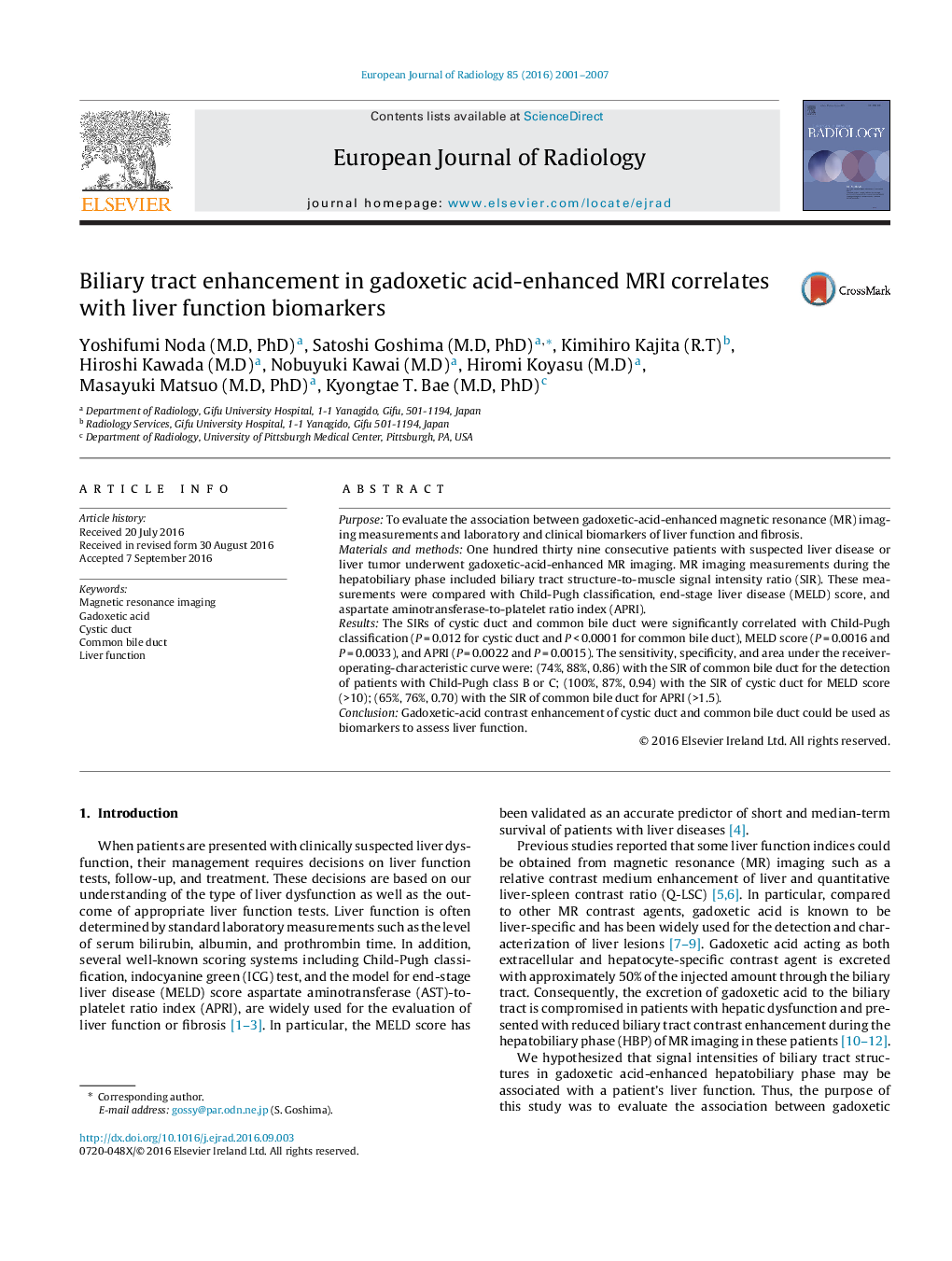| Article ID | Journal | Published Year | Pages | File Type |
|---|---|---|---|---|
| 4224775 | European Journal of Radiology | 2007 | 7 Pages |
PurposeTo evaluate the association between gadoxetic-acid-enhanced magnetic resonance (MR) imaging measurements and laboratory and clinical biomarkers of liver function and fibrosis.Materials and methodsOne hundred thirty nine consecutive patients with suspected liver disease or liver tumor underwent gadoxetic-acid-enhanced MR imaging. MR imaging measurements during the hepatobiliary phase included biliary tract structure-to-muscle signal intensity ratio (SIR). These measurements were compared with Child-Pugh classification, end-stage liver disease (MELD) score, and aspartate aminotransferase-to-platelet ratio index (APRI).ResultsThe SIRs of cystic duct and common bile duct were significantly correlated with Child-Pugh classification (P = 0.012 for cystic duct and P < 0.0001 for common bile duct), MELD score (P = 0.0016 and P = 0.0033), and APRI (P = 0.0022 and P = 0.0015). The sensitivity, specificity, and area under the receiver-operating-characteristic curve were: (74%, 88%, 0.86) with the SIR of common bile duct for the detection of patients with Child-Pugh class B or C; (100%, 87%, 0.94) with the SIR of cystic duct for MELD score (>10); (65%, 76%, 0.70) with the SIR of common bile duct for APRI (>1.5).ConclusionGadoxetic-acid contrast enhancement of cystic duct and common bile duct could be used as biomarkers to assess liver function.
